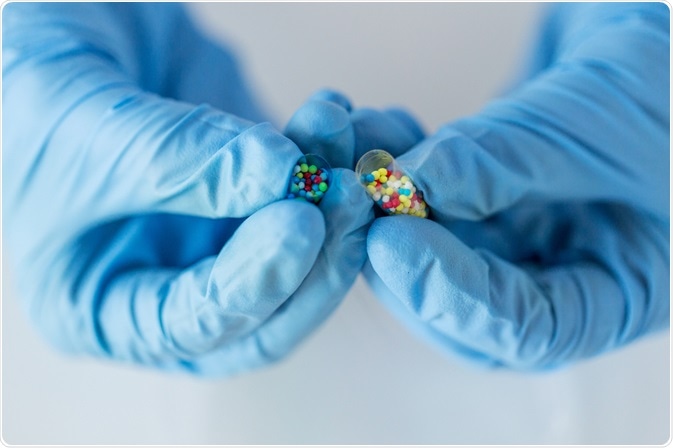The drug discovery process begins with recognizing a disease or clinical condition in which there is a lack of adequate medical treatment.
Once a potential drug has been identified, pre-clinical research can begin. This process includes several stages; the first of which involves identifying and validating the prospective drug’s target through assay development, high throughput screening, hit identification, and finally, lead optimization. Once the pre-clinical process is complete, the newly synthesized drug candidate is selected for future clinical development.
 Image Credit: Syda Productions/Shutterstock.com
Image Credit: Syda Productions/Shutterstock.com
How do compounds become therapeutic drugs?
Target identification
One of the most important steps in the preclinical drug discovery process involves identifying and validating the new drug’s target. A drug’s target can be any type of biological molecules, such as proteins, DNA and RNA. During this target identification stage, researchers must determine whether the target is efficacious and safe to be used as a drug target, as well as whether it can be accessible to the drug of interest.
Target identification experiments, which can be performed both in vitro and in vivo, provide important information regarding the relationship between the target and the disease, as well as whether any mechanism-based side effects can be anticipated upon the drug binding to this specific target.
Hit discovery
Target validation experiments, both of which can also be performed using in vitro and in vivo models, ensure that the identified target is fully prosecuted following drug treatment. Once target validation studies have been completed, the hit identification and lead discovery stages of the preclinical drug discovery process can continue.
The term “hit” is used to describe a molecule or compound that exhibits the desired activity, which will be reconfirmed during these testing procedures. Hit discovery utilizes various screening processes, such as high throughput screening (HTS), as well as focused or knowledge-based screening tools, to identify molecules that can potentially interact with the drug target.
These studies play a role in improving the potency, selectivity, and other important physiochemical properties of the new drug. All data acquired during these hit screening processes form the basis of the subsequent lead optimization stage.
How does lead optimization work?
As the final stage in the preclinical drug discovery process, the main goal of the lead optimization phase is to maintain the desired properties of the drug’s main components, while reducing any deficiencies that may exist in its structure.
If necessary, the chemical structures of the lead compounds identified during this stage can be altered to improve their selectivity and specificity towards a given target. For example, lead optimization in drug metabolism studies typically involves both in vitro and in vivo assays that assess the drug metabolism and pharmacokinetic (DMPK) properties. These studies will also be used to establish any potential safety concerns, and determine whether they will need to be assessed in a higher throughput manner.
The promising compounds that have been identified and assessed during the lead optimization phase, if successful, will be graded as having met the initial goals of this stage and can progress to undergoing final characterization assays before being confirmed as preclinical candidates. Some companies may also decide to incorporate these further characterization studies into their lead optimization phase.
Recent advances in lead optimization tools
During the lead optimization stage, data collected from in vivo pharmacokinetic studies is often further screened through the use of high throughput DMPK screening in vitro tests. Since most clinical researchers are extremely interested in advancing potentially life-saving therapeutic treatments to the clinical testing phase, recent advancements in automated screening systems have allowed for these tests to become routine parts of both the pharmaceutical and biopharmaceutical drug discovery processes.
For example, mass spectrometry is often used to evaluate new drug candidates by detecting and quantitating any drug metabolites present within tissues in a rapid and highly accurate manner. Additionally, nuclear magnetic resonance (NMR) fragment-based screening tools are also widely used to optimize lead molecules during preclinical screening procedures.
Sources
- Hughes, J. P., Rees, S., Kalindijian, S. B., & Philpott, K. L. (2011). Principles of early drug discovery. British Journal of Pharmacology 162(6); 1239-1249. DOI: 10.1111/j.1476-5381.2010.01127.x.
- Cheng, K. C., Korfmacher, W. A., White, R. E., & Njoroge, F. G. (2007). Lead Optimization in Discovery Drug Metabolism and Pharmacokinetics/Case study: The Hepatitis C Virus (HCV) Protease Inhibitor SCH 503034. Perspectives in Medicinal Chemistry 1; 1-9.
- Lead Optimization – Bruker
Further Reading